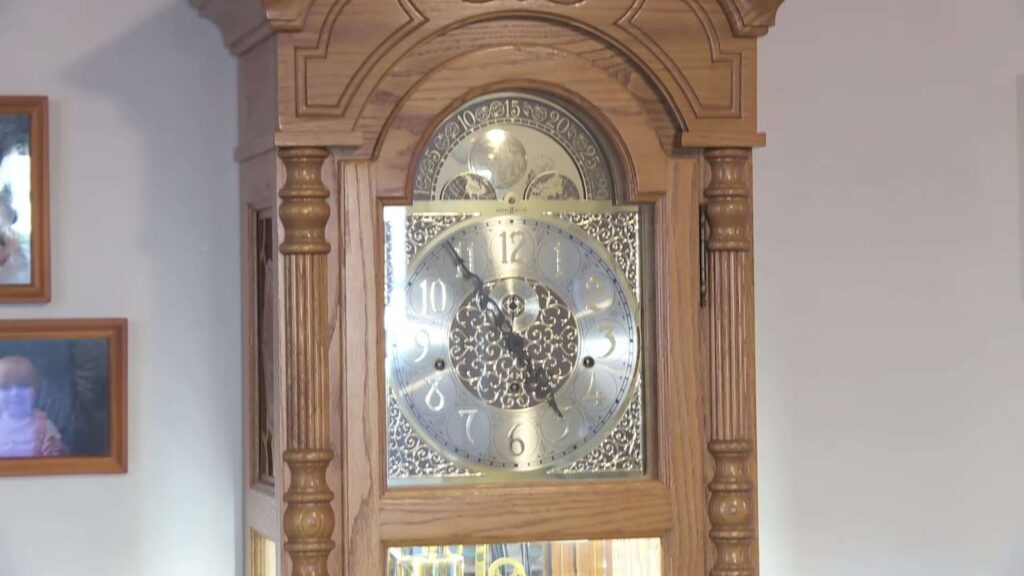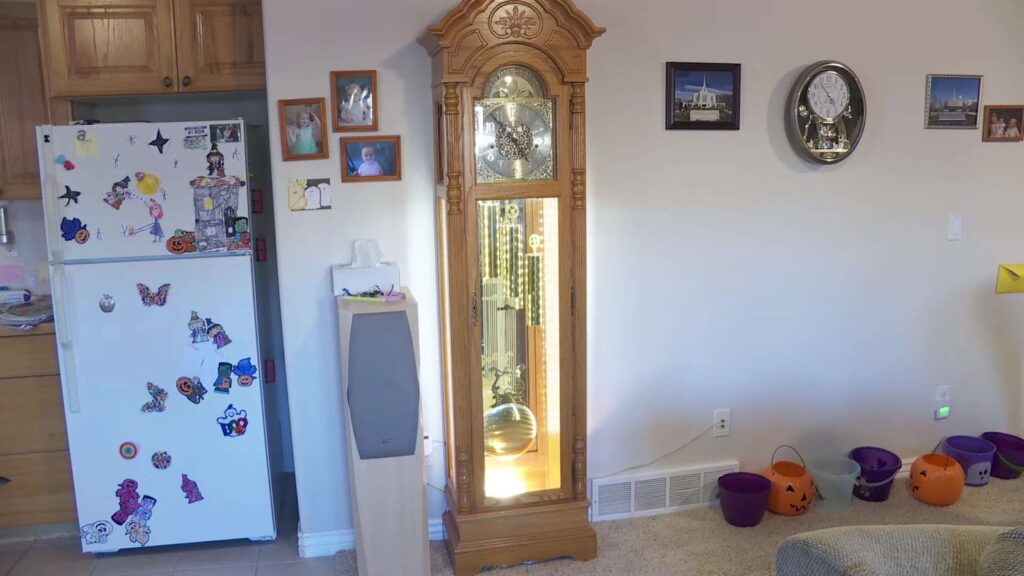Grandfather clocks boast a rich and captivating lineage, one that extends far beyond the ordinary expectations of most individuals. Upon its inception, the grandfather clock emerged as an unparalleled epitome of timekeeping precision, an achievement that astounded the world. Its debut onto the market was nothing short of a resounding success, sparking a monumental transformation within the clock-making industry. However, it’s worth noting that during its nascent stages, these remarkable timepieces were not bestowed with the moniker “grandfather clocks.” The origins of this name and the tale behind it encompass diverse interpretations, rendering it a truly remarkable narrative.
Exploring the Rich History of the Grandfather Clock
The grandeur of a grandfather clock, with its stately presence and rhythmic pendulum swings, has captured the imagination of many throughout history. Delve into the fascinating history of these timepieces and discover the evolution of their design.
Early Grandfather Clock Styles
- The first grandfather clocks made their appearance with a classical architectural charm. However, as time passed, various styles gained popularity, showcasing the adaptability of these timeless timekeepers;
- Early pendulum tall clocks were initially wall-mounted, but due to their heavy lead weights, securing them was likely quite challenging. This prompted the development of the iconic long case clock, designed to support the weight of these robust clock mechanisms;
- These early models stood at approximately 6 feet in height, boasting wooden cases that housed the all-important pendulums. As clockmakers extended the length of pendulums for greater accuracy, the cases followed suit, leading to the adoption of the moniker “longcase clock.”
The Grandeur of Grandfather Clocks
Grandfather clocks, often towering in their regal stature, are emblematic timekeepers encapsulated in finely crafted wooden encasements. With their commanding presence, these magnificent clocks, standing tall on your floor, typically range from a lofty 1.8 to 2.3 meters (6 to 7.5 feet) in height. But for those seeking something a tad more compact, there’s the charming “grandmother clock.” Here’s a deep dive into the captivating allure of these clocks:
Aesthetic & Functional Appeal:
- Timeless Beauty: Their meticulously designed wooden frames and intricate detailing make these clocks a work of art in any living space;
- Precision: Beyond their beauty, they are valued for their impeccable timekeeping abilities, making them both ornamental and functional;
- Sound: The soft ticking and melodious chimes add an auditory dimension, creating a warm and nostalgic atmosphere.
Delving Into the Name: Why “Longcase Clock”?
While many refer to these elegant timepieces as “grandfather clocks,” they were initially christened “longcase clocks.” Through time and cultural shifts, they’ve been known by various names:
- Longcase Clocks: Referring to their elongated appearance;
- Floor Clocks: Highlighting their placement on the floor;
- Standing Clocks: Emphasizing their upright stature;
- Pendulum Clocks: Named for their signature pendulum mechanism;
- Eight-Day Clocks: A name less commonly used, hinting at the time span they can run without rewinding.
Chronicles of the Grandfather Clock’s Origins
The narrative of clock-making took an impressive turn in the 17th century, shaping the way we perceive and measure time.
Pioneering Moments:
In approximately 1657, Christiaan Huygens, a Dutch astronomer, drew inspiration from the groundbreaking observations of Galileo Galilei to unveil a revolutionary timekeeping marvel: the pendulum-driven clock.
Fast forward to the vicinity of 1680, and we find the British clockmaker William Clement at the forefront of innovation, giving birth to the iconic grandfather clock that we now readily identify with. His pioneering design showcased a distinctive feature known as the anchor escapement system. This ingenious mechanism achieved a remarkable feat by significantly curtailing the pendulum’s oscillations, reducing it to a mere fraction of its predecessors’ extravagant swings, resulting in a remarkably precise 80-100-degree arc of motion.
A Lasting Legacy:
- The grandfather clock’s inception over three and a half centuries ago signifies a defining chapter in horological history;
- Today, they stand not merely as instruments of time but as timeless symbols of grace, precision, and artistry, cherished by generations. Discover who buys grandfather clocks!
Recommendations for Grandfather Clock Owners:
- Placement: Ensure the clock is on a level surface to maintain accurate timekeeping.
- Maintenance: Regular cleaning and servicing will prolong the life and efficiency of the clock. You can learn how to wind a grandfather clock here.
- Cherish its History: Understanding and sharing the clock’s history can enhance its sentimental value.
The Origins of the “Grandfather Clock” Name
When we encounter the term “grandfather clock,” our first instinct might be to link it with the cherished relics of our grandparents’ homes, where these timeless timepieces often found their place. However, the true origins of the name are rooted in a fascinating history that has nothing to do with grandfathers themselves.
Revealing the Origins of the “Grandfather Clock”
Though the expression “grandfather clock” exudes an aura of heritage and customs, it’s essential to recognize that this moniker is relatively contemporary, surfacing more than two centuries subsequent to the clocks it symbolizes. Were it not for the imaginative brilliance of the lyricist Henry Clay Work, we might still be using terms like “longcase clocks” or “pendulum clocks” to describe these majestic timepieces. The adoption of the phrase “grandfather clock” is intricately linked to Work’s poignant composition, “My Grandfather’s Clock,” which he authored in the year 1876.
The Enigmatic Tale of “My Grandfather’s Clock”: Unraveled by the Work Family
In the heart of Massachusetts, a lesser-known perspective on the origin of the iconic song “My Grandfather’s Clock” emerges from the descendants of Work’s wife. This captivating narrative unveils a unique dimension to the story. Sarah Parker, a member of the Work family, firmly believes that their possession of an antique clock is the true source of inspiration behind the famous melody. Let’s delve deeper into this enchanting saga.
Unveiling the Muse Behind Henry Clay Work’s Timeless Melody
Within the heart of the Parker family’s heritage, resides a precious relic they hold dear, a cherished artifact they believe to have kindled the very flame of creativity that birthed Henry Clay Work’s enduring ballad. At the heart of this narrative stands a resplendent tall-case clock, an heirloom once possessed by Sarah’s venerable grandfather. Although this wondrous wooden masterpiece has ceased to function, it continues to grace the Parker residence, forging an enduring connection to their illustrious lineage.
To grasp the full depth of this captivating saga, we must embark on a journey to a bygone era when the American songwriter, Henry Clay Work, found himself amidst the picturesque landscapes of North Yorkshire, England. His temporary abode was none other than the venerable George Hotel, whose lobby harbored an imposing pendulum clock. Though the clock had long fallen silent and been relegated to the status of a decorative relic, its hands remained forever frozen at the precise moment of 11:05. Work, driven by his ever-curious nature, could not resist the temptation to unravel its storied history, thereby laying the foundation for the enchanting narrative that would soon unfurl.
A Tale of the Jenkins Brothers
As per the owners, the clock possessed an enigmatic past, possibly shrouded in tales of old. Legend had it that it once graced the possession of the Jenkins brothers, who, in succession, held ownership of the inn. Interestingly, this timepiece was acquired on the very day the elder sibling came into the world. Throughout the span of their lives, the clock dutifully kept accurate time, serving as a quiet observer to their intertwined journey through existence.
However, a peculiar twist in the story emerged when the first Jenkins brother passed away. The clock’s once impeccable accuracy began to wane, and it eventually came to a complete halt at the precise moment of the brother’s demise. While some might speculate neglect as the cause, Work was informed that the clock’s unfortunate fate resulted from a breakdown beyond repair.
The Birth of a Timeless Tune
The story of the ill-fated Jenkins brothers’ clock may have been steeped in local legend, but for Henry Clay Work, it was a wellspring of inspiration. He transformed this intriguing narrative into the iconic song “My Grandfather’s Clock.” It is said that Work dedicated four years to crafting this melodic masterpiece, eventually published by Root & Cady in 1876.
A Clock’s Legacy Lives On
Work’s song breathed new life into the centuries-old timepiece. Today, the very clock that kindled Work’s creative spirit still graces the lobby of the George Hotel in North Yorkshire, preserving a connection to a captivating tale that continues to enchant and inspire generations.
The Rise and Influence of “My Grandfather’s Clock”
Historical Context and its Reception:
In an era where the digital age was yet to emerge, and songs primarily found their popularity through sheet music sales, “My Grandfather’s Clock” marked a distinctive achievement. Captivating listeners nationwide, the song achieved an enviable milestone by selling over a million copies in its sheet music format. Such a feat was rare and exceptional during this period, reflecting the song’s vast appeal.

Factors Contributing to its Success:
- Cultural Relevance: The song resonated deeply with its audience, perhaps due to the nostalgic and familial sentiments it evoked;
- Memorable Melody: Beyond its lyrical allure, the tune was catchy, ensuring it lingered in the minds of listeners;
- Shift in Social Terminology: As a testament to its widespread influence, the song even impacted the way people referred to a piece of timeless furniture. The previously known term, “longcase clock,” found itself swiftly overshadowed. In its stead, the more affectionate and evocative term “grandfather clock” surged in popularity.
Recommendations for Enthusiasts:
- Historical Dive: For those keen on understanding cultural shifts through music, studying the background and societal context during the song’s release can offer valuable insights;
- Exploring Variations: Over the years, many artists have covered or adapted this classic. Listening to different renditions can provide a richer appreciation of its enduring charm;
- Visit a Clock Museum: To truly understand the allure of the “grandfather clock,” one might consider visiting a museum or exhibition that showcases these magnificent timepieces. It’s a direct route to connecting the song’s imagery with real-world craftsmanship.
The legacy of “My Grandfather’s Clock” is undeniable. Its ability to influence societal terminology and remain relevant over time underscores its place in cultural history. Such stories serve as powerful reminders of the profound ways in which music can shape and reflect societal trends.
Conclusion
In conclusion, the fascinating history behind the term “grandfather clock” reveals a rich tapestry of tradition, innovation, and cultural evolution. While the name itself may not have an explicit connection to grandfathers, it symbolizes the deep-rooted craftsmanship and timeless elegance of these remarkable timepieces. From their origins in the 17th century to their enduring popularity today, grandfather clocks have not only marked the passage of time but have also become cherished heirlooms that bridge generations. So, the next time you hear the chime of a grandfather clock, take a moment to appreciate the history and craftsmanship behind this iconic piece of horological heritage, and perhaps even ponder the mysteries of time and memory that it continues to embody.
